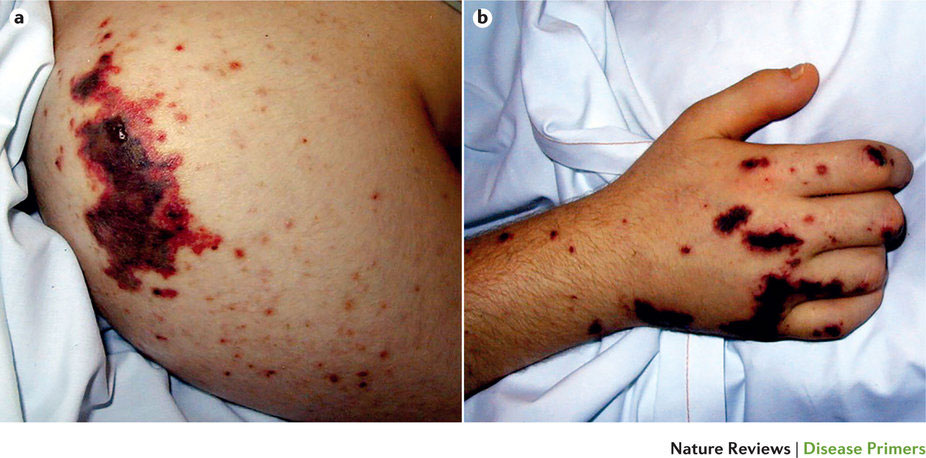播種性血管内凝固症候群
Disseminated intravascular coagulation
2016年6月2日 Nature Reviews Disease Primers Article number: 16037 (2016) doi: 10.1038/nrdp.2016.37

播種性血管内凝固症候群(DIC)は、敗血症などの感染性侵襲や外傷などの非感染性侵襲を原因とする後天性症候群で、全身に広がった血管内の凝固活性化状態を特徴としている。DICの主な病態生理学的機構は、炎症性サイトカインによる組織因子依存性血液凝固の活性化、抗凝固経路の制御能の低下、およびプラスミノーゲン活性化抑制因子1を介する線溶の抑制である。このような変化が重なると、内皮機能不全や微小血管血栓症が引き起こされて臓器機能不全を来すため、患者の予後に深刻な影響が及ぶ。最近、細胞外DNAおよびDNA結合タンパク質(ヒストンなど)がDICの発症機序に重要な役割を果たしていることが観察結果で明らかになった。国際血栓止血学会(ISTH)は、国際止血機能検査パラメーターを用いたDICの診断スコアリングシステムを作成した。現在、このスコアリングシステムはさまざまな臨床の現場で有効性が確認されている。理論的には、基礎症状に対する特異的かつ積極的治療によるDIC管理が基本になるが、患者の転帰改善に向けたDICの管理も同時に必要となる。ISTHのDIC治療ガイドラインでは最新のエビデンスに基づいた治療戦略が推奨されている。このPrimerでは、DICの病態生理、診断および管理についての最新の知見を概説し、この分野の基礎と臨床における今後の研究の方向性について考察する。
PrimeView
播種性血管内凝固症候群(DIC)は、感染状態または非感染状態を原因とする緊急疾患である。このPrimeView では、DICの発症機構である止血系の制御因子の不均衡について取りまとめる。
本Primerの図解サマリー

